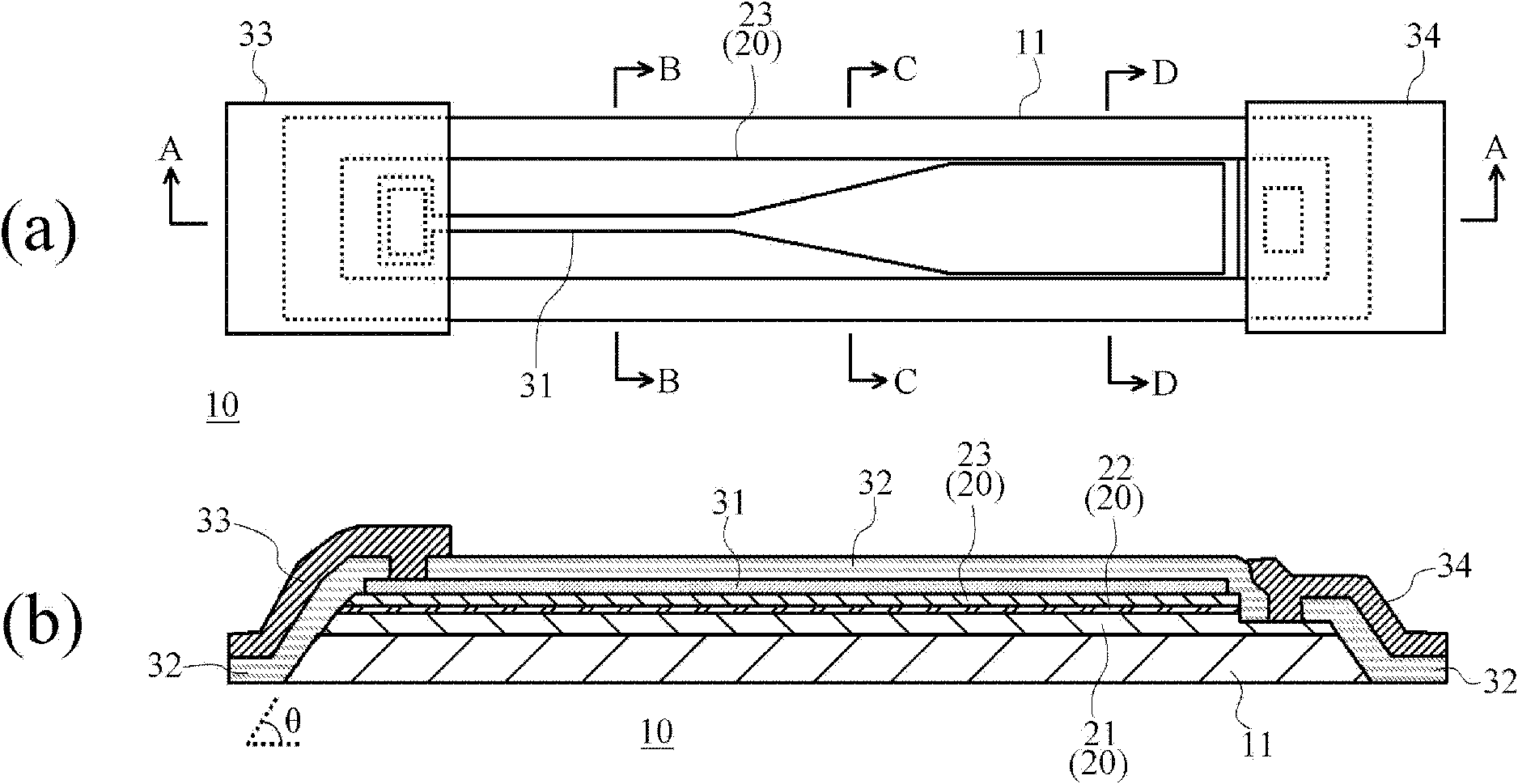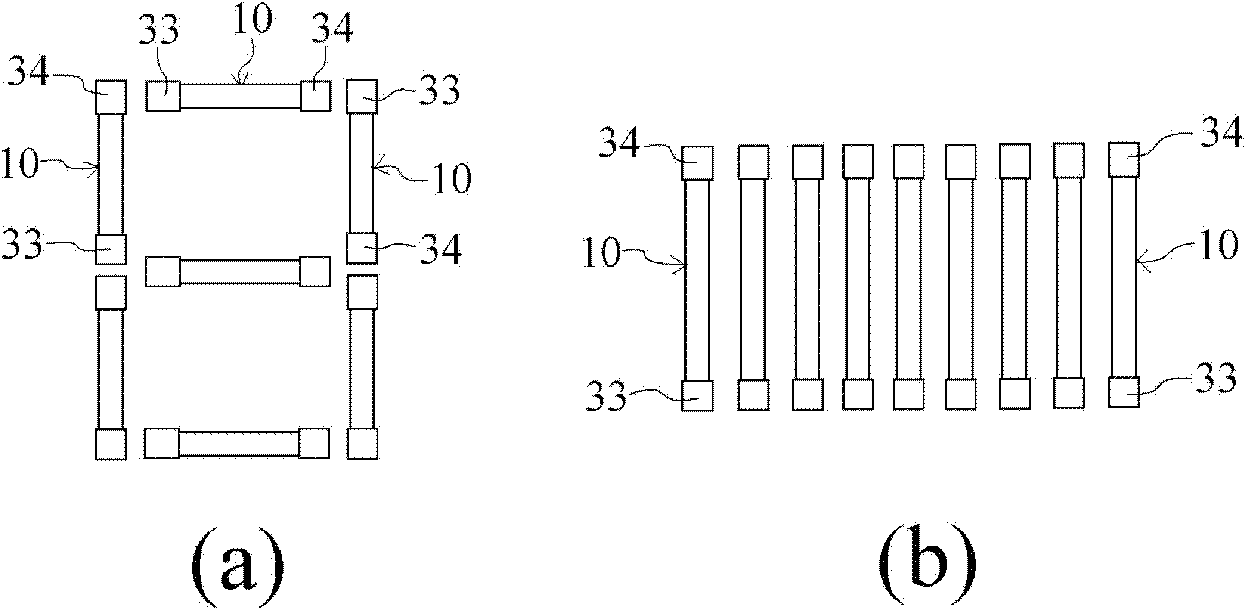Light-emitting element
A technology for light-emitting elements and light-emitting layers, applied in electrical components, semiconductor devices, circuits, etc., can solve the problems of difficulty and difficulty in improving the material constituting the transparent electrode, the conductivity of p-type GaN, and difficulty in luminous intensity, and achieve uniform luminous intensity. Effect
- Summary
- Abstract
- Description
- Claims
- Application Information
AI Technical Summary
Problems solved by technology
Method used
Image
Examples
Embodiment Construction
[0033] Hereinafter, a light emitting element according to an embodiment of the present invention will be described. In this light-emitting element, both the p-side electrode (anode) and the n-side electrode (cathode) are formed on one main surface side of the semiconductor light-emitting functional layer. In addition, the semiconductor light-emitting functional layer is formed in an elongated form in the direction from the p-side electrode toward the n-side electrode.
[0034] figure 1 It is a top view (a) of the light-emitting element 10 and a cross-sectional view (b) along the A-A direction thereof. and, figure 2 (a), (b), (c) are respectively figure 1 Cross-sectional views of B-B direction, C-C direction, and D-D direction in (a).
[0035] The semiconductor light-emitting functional layer 20 that emits light in the light-emitting element 10 is formed on the Si substrate 11, and has an n-type GaN layer (first semiconductor layer) 21, an MQW (Multi Quantum Well, multip...
PUM
 Login to View More
Login to View More Abstract
Description
Claims
Application Information
 Login to View More
Login to View More - R&D
- Intellectual Property
- Life Sciences
- Materials
- Tech Scout
- Unparalleled Data Quality
- Higher Quality Content
- 60% Fewer Hallucinations
Browse by: Latest US Patents, China's latest patents, Technical Efficacy Thesaurus, Application Domain, Technology Topic, Popular Technical Reports.
© 2025 PatSnap. All rights reserved.Legal|Privacy policy|Modern Slavery Act Transparency Statement|Sitemap|About US| Contact US: help@patsnap.com



